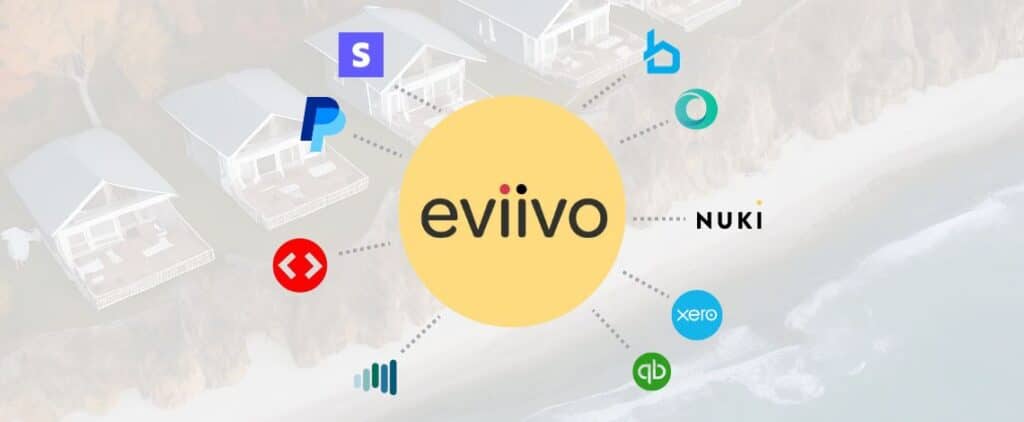Did you know that property managers saw their short-term rental portfolios grow by an average of 41% in 2022 alone?* In this climate, it’s fair to say that the world of short-term rentals is bursting with growth potential.
Yet taking advantage of any growth opportunity requires smart planning and impeccable management. Whether you’re looking to grow your existing portfolio of properties, or you’re a real-estate agent looking to expand into short-term rentals, here’s how to scale your business successfully.
1. Make sure you’re prepared
So you’ve made the big decision to grow your short-term rental business. No matter how eager you are to leap into action, your first step should always be to prepare.
There are many ways to get prepared for your expansion. First and foremost, crunch the numbers! Find out what your expansion plan is going to cost you – are you financially ready? Calculate the estimated revenue and profit margins of any planned additions to your portfolio. Make sure you incorporate all costs you should reasonably anticipate, like taxes, insurance costs and vacancy expenses. The more costs you consider, the fewer nasty surprises you’ll encounter as you progress.
Secondly, research the market. Whether you’re staying local with your new investments or branching out to another area, it’s important to understand what’s happening trend-wise. For example, is there enough demand for short-term rentals in the area to make the investment worthwhile? More specifically, is there high demand for the type of short-term rental you’re going to offer (e.g., luxury or budget; vacation or corporate rentals)?
Thirdly, be prepared for what the expansion will require from you in terms of time and effort. Ask yourself whether this is the right moment to begin expanding. Are your staff and systems set up to run the day-to-day operations reliably while you focus on growth and acquisition? Or are you still too swamped by your business to have the time that your expansion needs? Remember, you want to be able to keep your head in the acquisition game if you’re going to succeed!
2. Have a direct booking website
72% of adults prefer to book their vacations online.** To take advantage, your portfolio of properties has to be discoverable and bookable on the web. Naturally, the best way to ensure that is with a fantastic website.
Having your own website allows you to unlock more revenue by bringing in commission-free, direct bookings. If managed well, your website also helps you build a brand that travelers worldwide recognize, trust and choose when booking stays. Positive brand awareness is a must if you have major ambitions to grow, and your website is the key channel for developing it.
To set up a website that reflects your growing business, showcases your brand and drives direct bookings, follow these tips:
- Use a multi-property website to showcase all of your properties. This makes it easy for travelers to browse your portfolio and choose their preferred stay, increasing the odds they’ll convert into a direct booking guest. Make it extra convenient by including a quick availability calendar that shows them which of your properties are available at a glance.
- Give your multi-property website a powerful booking engine. You want to be sure that visitors can book a stay from anywhere, at any time. Likewise, ensure that they feel safe booking directly by opting for an engine that offers PCI Level 1 compliance.
- Use your website to put your brand on display. As your online shopfront, it’s the ideal place to do so! Once you’ve chosen your brand logos and colours, apply them to your website. If each of the properties you manage have their own unique branded site, then add them to your multi-property website to build a cohesive brand.
3. Connect to booking channels the smart way
Although your own website is crucial for direct sales, you need a presence on major online travel agencies (OTAs) to truly get your portfolio noticed. Once you’ve identified the OTAs that are right for your business, the next step is managing your connections – and bookings – easily as your portfolio grows.
For this reason, using a channel manager is a must. Channel managers keep your availability and rates synchronized across your connected channels. This means that you’re able to prevent overbookings without having to spend hours manually updating each OTA.
With multiple properties to manage, you really want to be sure your team is dealing with as few manual updates as possible. Therefore, look for a channel manager with deep integrations that updates everything automatically across channels:
- Rates
- Availability
- Photos
- Content
- Terms
- Policies
Only a channel manager that keeps all these elements synchronized puts you in control of your listings as your business grows.
4. Make onboarding new properties easy
If your goal is to expand your portfolio, then you must be able to bring new properties into the fold smoothly. Seamlessly onboarding properties keeps your portfolio easy to manage as it expands, freeing you to reduce bottlenecks and tedious admin with each acquisition.
One way to streamline the onboarding process is to establish key ‘model’ properties as early as you can. Doing so gives you a clear baseline to replicate as you add similar units to your portfolio. In turn, this makes the onboarding process much quicker going forward.
To really save time, look for multi-property management software that allows you to clone your ‘model’ property unit. By replicating the entire configuration of your model, you enable new properties to be onboarded in a flash.
5. Choose the right partners for your short-term rental business
Running an expanding property portfolio takes a village. Your long-term success rests on selecting the right people to work with early on, so choose wisely. Here are the key relationships you need to create and nurture:
- Homeowners or property owners: These individuals entrust their homes to you. A solid working relationship with them ensures their continued commitment – and your steady supply of rental properties.
- Your property management team: Your team is on the front lines of the day-to-day operations. Choosing reliable people here is essential to maintain property quality and keep everything running smoothly.
- Service providers: You need a network of dependable cleaning crews, maintenance teams, and repair professionals at your disposal. These partners help ensure that your properties stay well-maintained, clean and in excellent condition, meeting the high standards that guests expect.
- Technology partners: Partnering with the right technology providers allows you to keep control of your data and streamline operations as your short-term rental business grows. The overwhelming majority of short-term rental property managers use vacation rental software, be it a combination of specialized tools or an all-in-one property management system (PMS). Look for software with automation and AI-powered features that save time and effort and help you to perfect your working relationships with the partners named above.
For the remainder of this article, we’ll cover ways to build, maintain, and make the most of these relationships that are key to growing your short-term rental business.

6. Manage cleaning and changeovers efficiently
To give yourself time to focus on growing the business, you need daily operations at your properties to run like clockwork. This includes those all-important changeovers and housekeeping duties.
Here are some best practices to help perfect the scheduling and organisation of housekeeping across your portfolio.
Firstly, develop detailed cleaning checklists and standardized protocols for each property. Although this requires work upfront, it establishes a consistent standard to follow, which makes it easier to train and manage cleaning staff over time.
Secondly, make sure that the cleaning is outsourced to professional companies with experience in short-term rentals. You want to know the cleaning is being handled by people with the right skills, equipment and flexibility for the job.
Finally, consider using a centralized, interactive cleaning dashboard to coordinate cleaning teams and maintenance staff across your properties. This streamlines communication and ensures all tasks are scheduled and completed on time.
Look for the right solution here to keep things simple as your portfolio expands. Your dashboard should be integrated with your PMS for your management team’s convenience, and it should allow them to:
- Set the cleaning schedule for the day (including bulk updates)
- Assign a housekeeper to a given room
- Add cleaning instructions to bookings and the dashboard
- Send cleaning instructions to cleaners via email
To reach new heights of efficiency, you can also automate elements of this scheduling. For example, you may wish to send automated email alerts to ensure cleaning teams receive instructions and schedules at just the right moment. And of course, cleaners themselves should also be able to use the dashboard to see which rooms or units they need to clean, add notes, mark rooms/units as cleaned, and/or explain why they could not clean a room.

7. Provide – and control – multi-user access to data
Naturally, a growing short-term rental business means more people working in your business. It’s important that all teams and individuals have access to the data and info they need to do their jobs. For example, the cleaning teams we mentioned above need their daily schedule to get the job done.
However, you don’t want individuals to have access to more data than they need. Property management companies handle extremely sensitive guest information, including personal details and payment data. To reduce the risk of data breaches and any unauthorized uses of guest data, you must set up controlled multi-user access to your PMS and other systems.
With controlled multi-user access, you’re able to assign specific roles and permissions to team members based on their responsibilities. For instance, a front desk agent may need access to reservation data, while a maintenance worker might only require access to work order requests. By setting up role-based permissions, you ensure that each user can only access what’s relevant to their role, which boosts data security and reduces the risk of human error.
Another advantage of a strong multi-user access procedure is that it makes it easier to manage access over time. With the right PMS, you should be able to create individual users, property sets and teams (e.g., “The cleaning team”). Then, you can assign the relevant users, roles and property sets to each team. This will save you a lot of time as your business expands and employees join or leave because you can quickly grant or revoke access as needed. You also enjoy the flexibility to restrict roles and permissions for single users or teams on a per-property basis.
8. Keep your property owners happy
Your relationship with any property owners in your portfolio is a key one, for both retention and growth. So, how exactly do you keep your owners satisfied – and build your reputation as the property manager worth partnering with?
Above all, crystal-clear communication with your property owners is crucial. Owners want to be regularly reassured that their property is in the right hands. So keep them in the loop by providing them with clear, comprehensive performance reporting. Similarly, provide owners with itemized billing of charges to show that you’re a transparent and trustworthy business.
To save precious time setting up your reports and charges, look for a PMS with owner management functionality. This allows you to automate per-booking charges for owners and generate instant yet detailed invoices that include all the charges and fees you wish to pass on to them.

9. Gain time to focus on acquisition and sourcing
Ultimately, your ability to focus on growing your business is about one thing: time. Do you have the free hours to devote to sourcing and acquisitions, or are you too swamped by the day-to-day operations of your existing properties?
If there aren’t enough hours in the day currently, consider investing in property management technology that gives you – and your team – time back. Here are some of the features you want to look for:
Bulk management
Being able to make updates across multiple properties in bulk is a huge time-saver. We’ve already discussed the importance of cloning model units to streamline onboarding. Here are some of the other things you can manage in bulk with the right property management software:
- Room rates – set rules to automatically increase or decrease your rates in line with demand across multiple properties.
- Close-out rules – set rules to take certain types of accommodation off sale or offline automatically as properties get full.
- Guest charges – apply extra guest charges like breakfast rates or cleaning fees to multiple properties in one go.
And don’t forget about flexibility. In addition to being able to apply these updates in bulk, you want freedom to edit them as your business strategies evolve.
Streamline guest communications
How much time does your team spend sending the same information to guests time again and again, or answering the same queries over and over? There’s no doubt that guest communications take up a lot of time – but they can’t be neglected if you want to build a glowing reputation with travelers.
The solution is to streamline your guest communications. Easier said than done? Here are a few ways to achieve it:
- Automate key communications, including emails and Airbnb short messages, to send at any stage of the booking journey you choose – from booking confirmations containing all useful info to post-stay feedback requests. This provides the regular communication that today’s travelers expect, while saving precious time.
- Centralize communications from multiple channels, like Airbnb, Booking.com, Vrbo and your direct channel. This allows you to view and respond to messages from multiple sources via one unified messaging inbox, so you’re not losing time (and patience!) going between platforms.
- Use an AI-powered tool, like eviivo Suite’s ground-breaking Concierge, that is able to respond to online guest queries on your team’s behalf 24/7.
Automation tools
If automating manual tasks has been a running theme in this article so far, it’s for good reason! Automation is truly one of the best ways you can 1) save time to focus on growth and 2) create efficiencies that make expanding easier.
Today, you can use tools to automate a huge range of property management tasks. Some of these we’ve covered, including automated channel updates, cleaning scheduling, and guest communications. Another big task worth automating is payment collection. Automating a range of payments, from the collection of deposits, taxes, and cleaning fees, to the pre-authorization of damage deposits, allows you to manage them across your portfolio accurately – and on time, every time.
The list doesn’t end there. Read about 10 automation tools for your short-term vacation rental business.
10. Be ready to manage remotely
Although starting your short-term rental business close to home makes operations easier, you’ll likely feel more confident exploring new horizons as you grow. However, it’s important to choose your locations strategically. Again, be sure to do your research, as any number of factors may affect the viability of your locations. Examples include everything from a competitive local landscape to regional regulations like New York’s Short-Term Rental Registration Law.
Once you’re 100% sure on the location, you’ll want to know you can manage your properties remotely in total confidence. So invest in tools and systems that make day-to-day operations smooth, like:
- An easy-to-use multi-property calendar that allows you to oversee all bookings at all properties in one place
- A seamless contactless check-in process that provides guests with easy instructions and automatically generated door access codes
- Strong exception management features that allow you to spot and resolve anything that requires immediate attention (from card declines to overbookings) in one place
- Functionality to create, customize, send and receive rental agreements that guests can sign electronically. Centralizing and automating the rental agreement process saves time and reduces admin while keeping your properties protected. For extra convenience and flexibility, you should also be able to maintain multiple agreement templates for different properties in your portfolio.
You can get all these features – as well as those we’ve mentioned elsewhere in this article – in one PMS. eviivo Suite is a centralized platform that allows users to manage many properties, teams and bookings in one place. This makes multi-property management from anywhere a breeze – and frees you to focus on growing your portfolio.
Conclusion
Whether you’re starting small or going big, scaling your short-term rental business requires you to build strong connections and embrace technology. By doing so effectively, you’ll keep your daily operations streamlined, your key relationships nurtured, and your portfolio easy to manage as you expand.
Combine that with plenty of preparation, strategic savvy, and a positive mindset, and there you have it – your recipe for long-term growth for your short-term rental business.
*Transparent, Global Property Manager Survey 2023
**Statista Consumer Insights, 2023


